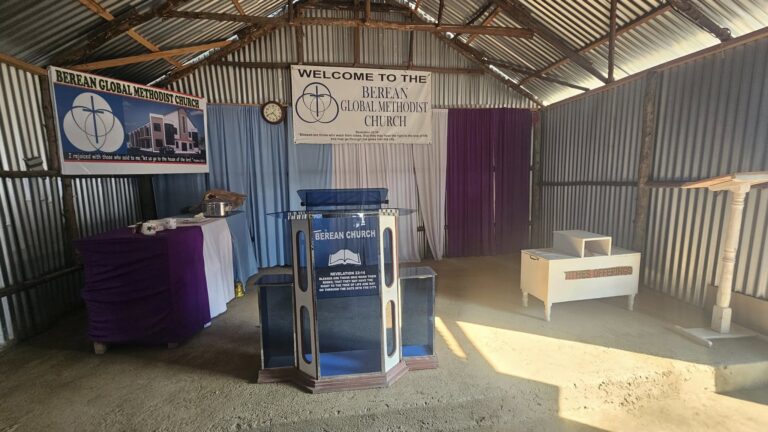The felt heartbeat of Methodist evangelism has always been this: testimony changes lives. From its earliest days, Methodism has been a movement of storytelling—not abstract theology alone, but real, Spirit-breathed accounts of God’s transforming grace in ordinary people.
Nowhere is this clearer than in the vision of John Wesley, founder of Methodism and editor of The Arminian Magazine.
The Arminian Magazine: A Platform for Testimony
In 1778, John Wesley launched The Arminian Magazine as a theological and spiritual counterpoint to the prevailing Calvinist voices of his day. But Wesley’s deeper aim was pastoral and evangelistic: to share living stories of God’s work in real lives.
Wesley wrote in the first issue:
“It is chiefly designed to display the glorious grace of God, as it is manifested in the lives and experiences of His people.”
The pages of the magazine were filled with conversion stories, accounts of holiness, perseverance in suffering, and moments of divine encounter. Wesley believed that hearing how God was at work in the lives of others would stir faith in the reader’s heart.
One such story, published in 1780, tells of a woman named Mary Gilbert, a servant girl whose life was transformed after hearing a street preacher. She recounts:
“My heart was strangely warmed when I heard the words, ‘Christ died for thee.’ I felt as though the burden of sin had rolled away, and I wept for joy. From that hour, I knew I belonged to Him.”
For Wesley, stories like Mary’s weren’t sentimental—they were evangelistic fuel. They revealed what God could do—and was still doing.
This belief is captured in Wesley’s now-famous declaration:
“Give me one hundred preachers who fear nothing but sin and desire nothing but God, and I care not a straw whether they be clergymen or laymen; such alone will shake the gates of hell and set up the kingdom of heaven on earth.”
Wesley saw that preaching and testimony were not reserved for professionals. He empowered laypeople to witness boldly—and that movement shook the world.
Pre-1968: Boards of Evangelism in the Methodist Tradition
That same passion carried through the centuries as Methodism expanded in America. The fire of early revivals gave rise to circuit riders, camp meetings, and eventually, formal Boards of Evangelism at both the conference and national levels.
These boards were tasked with keeping the flame of evangelism alive. They trained lay speakers, equipped pastors, and supported new methods of outreach—from radio and print media to door-to-door visits and revival services. Their mission was clear: help the local church become an evangelistic force.
They never strayed far from Wesley’s example. Evangelism was personal, story-driven, and rooted in the experience of grace.
1968: A Merging of Structures—and Messages
When The Methodist Church united with the Evangelical United Brethren Church in 1968 to form the United Methodist Church, the General Board of Evangelism merged into the General Board of Discipleship. This was intended to reflect a broader, integrated vision of Christian growth—evangelism as part of lifelong discipleship.
But over time, that shift diluted and diminished the bold clarity of Methodist evangelism. In many places, evangelism became optional or misunderstood, even as the culture’s spiritual hunger deepened.
Still, God continued to raise up faithful voices—both lay and clergy—who kept sharing stories of redemption and inviting others to experience Jesus for themselves.
Today: The Global Methodist Church and a New Invitation
With the formation of the Global Methodist Church, and the planting of Macland Community Church a new chapter is being written—one that seeks not to depart from the past, but to recover our Wesleyan roots. Evangelism is not an outdated program; it is our birthright and mission.
Here at Macland Community Church, we stand in the line of Wesley, of Mary Gilbert, of generations of believers whose lives were changed by a story—and who then shared their own.
God is calling every member to become a witness, empowered by Holy Spirit (Acts 1:8).
Not a degreed theologian. Not a preacher. A Spirit filled witness.
Your Story is the Gospel in Motion
In this spirit, its our time, it’s your time, to every person in the Global Methodist Church and every member of Macland Community Church:
🔹 1. Write Your Story
Sit with God and reflect on how He has moved in your life. What was your life like before Jesus? When did grace break through? What has changed since? Whether dramatic or quiet, your story is sacred. Write it down.
🔹 2. Rehearse Your Story
Practice telling it. Say it out loud. Share it in small group. Speak it in prayer. You don’t need polished words—just honest ones. The more you rehearse, the more ready you’ll be when the Holy Spirit opens the door.
🔹 3. Share Your Story
There is someone in your life right now who needs to hear that change is possible—that God is real. You may be the person God uses to plant a seed, open a heart, or start a journey. Don’t wait. Share it.
Just as The Arminian Magazine once spread stories of grace across England and beyond, so today your story can carry that same flame.
A wonderful thing happened last night in your Leadership Council. We all took 2:51 to 3:45 minutes to share our story. We now know one another deeper, we understand where each other came from and how Jesus met each one of us. It was Holy.
Now it’s your turn…
Write it. Rehearse it. Share it.
The world is waiting. And so is someone who needs to know what God has done in you.
Let’s shake the gates of hell—and set up the kingdom of heaven on earth.
Amen.
-Prepared by Pastor Lee Stevenson, using ai.










